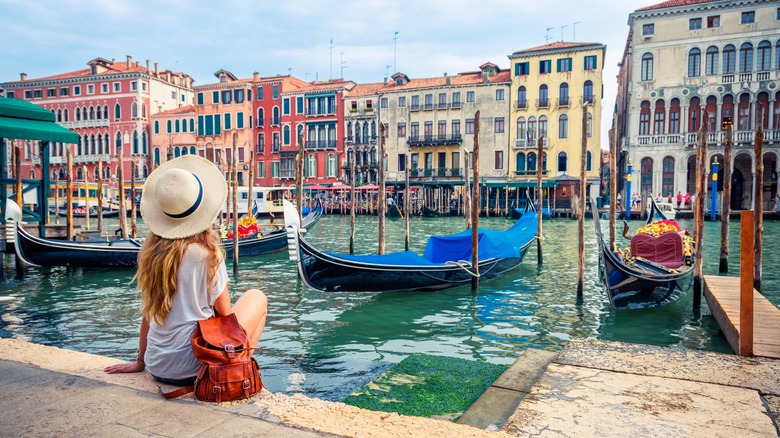Traveling to Europe is a dream for many Indian travelers—and with good reason. From fairy-tale castles and rich history to stunning landscapes and world-famous cuisines, Europe is a vibrant tapestry of cultures and experiences. However, planning a Europe trip from India can seem overwhelming at first, especially with visa requirements, budgeting, and itinerary planning to consider. But don’t worry—this comprehensive guide will walk you through every step of planning your dream European adventure.
Step 1: Decide Your Travel Dates
Best time to visit Europe:
- Spring (April to June) and Autumn (September to October) are ideal for pleasant weather and fewer crowds.
- Summer (July to August) is peak tourist season with festivals and vibrant street life, but it comes with higher prices.
- Winter (November to March) offers beautiful snowy landscapes, especially in the Alps and Northern Europe, along with Christmas markets.
Tip: Choose your travel dates based on the experiences you want—skiing, sightseeing, or cultural events.
Step 2: Choose Your Destinations
Europe has over 40 countries, each with its own charm. You can’t do it all in one trip, so start by narrowing down your must-visit places.
Popular combinations:
- Western Europe: France, Switzerland, Italy, and Spain
- Central Europe: Germany, Austria, Czech Republic, Hungary
- Eastern Europe: Croatia, Poland, Slovenia, Romania
- Northern Europe: Norway, Sweden, Denmark, Finland
Sample 10-day itinerary:
- Day 1–3: Paris (France)
- Day 4–5: Lucerne/Interlaken (Switzerland)
- Day 6–7: Venice/Florence (Italy)
- Day 8–10: Rome (Italy)
Tip: Limit your itinerary to 2–4 countries for a manageable trip.
Step 3: Set a Budget
Your budget will determine the kind of trip you can have. Here’s a rough estimate for a mid-range Europe tour from India (per person):
- Flights: ₹40,000–₹70,000 (round trip)
- Visa fees (Schengen): ~₹7,200
- Accommodation: ₹4,000–₹8,000 per night
- Food: ₹1,000–₹2,000 per day
- Transport (Eurail, buses, etc.): ₹10,000–₹20,000
- Activities & Entrance fees: ₹10,000–₹15,000
Total (10–12 days): ₹1.2–2.0 lakhs
Tip: Booking in advance and traveling during shoulder seasons can help reduce costs.
Step 4: Get a Schengen Visa
Most European countries are part of the Schengen Zone, and Indian citizens require a visa to enter.
Visa process:
- Decide the country where you’ll spend the most time—it will be your visa-processing country.
- Schedule an appointment with VFS Global or the embassy.
- Submit required documents:
- Filled visa application form
- Valid passport
- Travel itinerary
- Confirmed flight and hotel bookings
- Travel insurance (minimum €30,000 coverage)
- Bank statements and income proof
- Attend biometric appointment
- Visa processing takes 15 working days (approx.)
Tip: Apply at least 30 days in advance.
Step 5: Book Flights
Search for round-trip flights from major Indian cities like Delhi, Mumbai, or Bengaluru to European hubs like Paris, Frankfurt, or Amsterdam.
Best airlines: Emirates, Qatar Airways, Lufthansa, Air France, Vistara
Flight comparison tools: Skyscanner, Google Flights, MakeMyTrip
Tip: Booking 2–3 months in advance often gets you better deals.
Step 6: Plan Accommodation
Europe offers a wide range of stay options:
- Budget: Hostels, guesthouses, Airbnb (₹2,000–₹4,000)
- Mid-range: Boutique hotels, 3-star hotels (₹4,000–₹8,000)
- Luxury: 4- and 5-star hotels, resorts, heritage properties (₹10,000+)
Use platforms like Booking.com, Agoda, or Airbnb to reserve stays.
Tip: Choose central locations to save on local transportation.
Step 7: Arrange Local Transportation
Eurail Pass: Offers unlimited train travel across multiple countries; ideal if you’re covering 3+ countries.
Point-to-point train tickets: For short distances, book directly with national rail services.
Budget airlines: Ryanair, EasyJet, and Wizz Air offer cheap flights across Europe.
City transport: Trams, metros, and buses are efficient and affordable. Many cities offer tourist passes for unlimited travel.
Tip: Book trains and buses in advance to get better prices.
Step 8: Buy Travel Insurance
Mandatory for Schengen visa. It should cover medical emergencies, trip cancellations, and loss of baggage.
Recommended providers: Tata AIG, HDFC Ergo, ICICI Lombard, Religare
Tip: Look for insurance with 24/7 assistance and cashless hospitalization.
Step 9: Currency Exchange & Cards
- Carry some Euros in cash for initial expenses.
- Use a forex card or international debit/credit card for larger payments.
Tip: Avoid airport currency exchange counters due to high rates.
Step 10: Pack Smartly
- Carry clothes based on the weather and country you’re visiting.
- Don’t forget power adapters (Europe uses Type C and F plugs).
- Pack medicines, toiletries, and comfortable shoes.
Tip: Keep all important documents (passport, visa, insurance) in your carry-on.
Bonus Tips for a Smooth Trip
- Download offline maps and translator apps
- Learn a few local phrases—it’s appreciated!
- Be respectful of local customs and traditions
- Stay alert and beware of pickpockets in touristy areas
A Europe trip from India is more accessible than ever before with proper planning and smart choices. From the Eiffel Tower and Swiss Alps to Venetian canals and Roman ruins, each day in Europe brings a new story.
At Helm Holidays, we specialize in crafting seamless Europe tour packages for Indian travelers—whether it’s a honeymoon, family trip, or solo adventure. Let us take the stress out of planning so you can focus on making memories.
Your European dream awaits—are you ready to make it real?


0 Comment